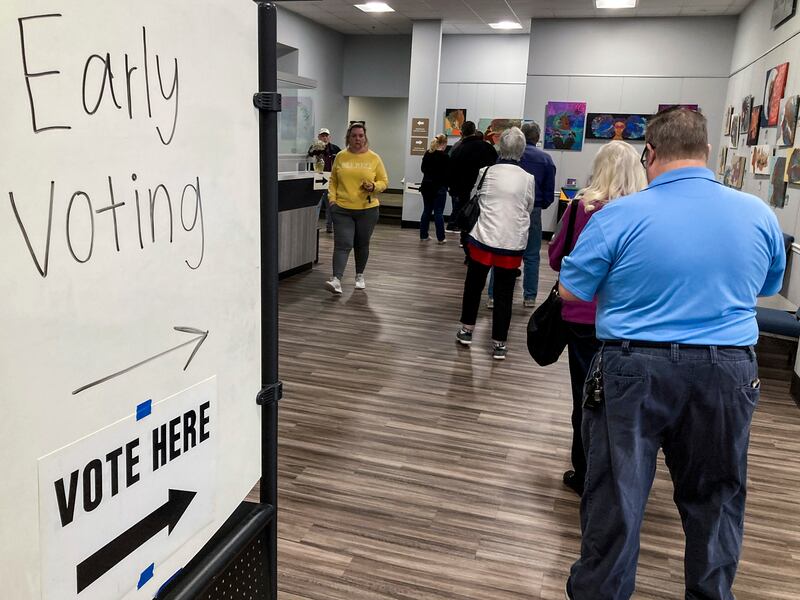Too many people are focused on allegations of voter fraud. That’s a needless distraction.
If you want to know what can really make your vote less powerful, look at redistricting. And if you want to see how hot the battle over this has become, watch the Supreme Court, which will begin hearing a case this Wednesday that has the potential to turn maps, and perhaps many laws related to voting, into super weapons.
This isn’t a new fight. It’s almost as old as the republic. In 1812, Elbridge Gerry, the governor of Massachusetts, signed a bill that created a congressional district some people thought looked like a salamander. It was drawn that way to help Gerry’s Democratic-Republican Party win and the rival Federalist Party lose.
People combined Gerry’s name with a salamander and came up with gerrymander, which forever more became a word to describe maps drawn with a political outcome in mind.
Modern opponents call it an attempt for politicians to choose their voters, rather than the other way around.
Courts have wrestled with it. Voters have passed referenda against it. Others have argued over the elusive definition of fairness. Does it mean districts are evenly drawn? Does it mean giving power to communities of interest — and what exactly does that mean?
Confusion aside, one thing is sure. Americans ought to pay attention in coming weeks to the latest twist in this fight, and that includes Utahns.
Moore v. Harper is a case out of North Carolina, where the state Supreme Court ruled a congressional map drawn by the Republican Legislature violated the state constitution. Republican lawmakers have appealed that to the U.S. Supreme Court and are using a novel argument known as the “independent state legislature theory.”
It goes like this: The Constitution says state legislatures have the power to decide the “times, places and manner of holding elections for senators and representatives.” This means state lawmakers stand supreme within their states. Their decisions on redistricting and election law can’t be challenged by courts or election officials, at least not when it comes to electing members of Congress.
I should interject here that the Founders were big fans of checks and balances. In an amicus brief, law professor Evan Bernick argues convincingly that history is not on the side of this theory.
“As colonial citizens, the framers watched the king dissolve parliament and then refuse to call a new election in order to aggrandize his own power,” he wrote. “The ratifying public was acutely aware that concentrated power over elections could threaten their entire experiment in republican government and regarded all legislative power as inherently limited.”
If the Supreme Court should agree with the theory, any state election law passed by referendum could be nullified. After all, a referendum is passed by voters, not legislatures.
Which brings me to Utah voters. Four years ago, they passed Proposition 4, which created an independent commission to redraw boundaries. Lawmakers later rewrote that law to make the commission advisory only. Then they ignored the commission’s advice and passed maps of their own.
That led to a lawsuit that may soon be heading to the Utah Supreme Court. It has nothing to do with the election language in the Constitution. But if the U.S. Supreme Court endorses the “independent legislature theory” in North Carolina, Utah’s Proposition 4 could become null and void.
When asked for comment, an attorney for the team supporting Proposition 4, Hayden Johnson, said by email:
“Despite the Legislature making every effort to avoid facing the facts of its extreme partisan gerrymandered map, the court has rejected their arguments. Utahns deserve to pick their politicians, not the other way around, and we will continue to advocate for their constitutional rights in court.”
As long as a party has enough numbers, gerrymandering works. In 2010, a Republican State Leadership Committee launched what it called a REDMAP initiative. It targeted vulnerable Democrats in statehouses, building majorities in legislatures and taking hold of the mapping process.
The Atlantic reported in 2017 that the effort had switched nearly 700 legislative seats and changed six governor seats from Democrat to Republican. Obviously, this hasn’t always resulted in a Republican majority in Congress, but the tactic is effective.
I should note that Democrats are just as eager to do the same, and have done so in states, such as Maryland, where they enjoy majorities.
Utah doesn’t need artful maps for Republicans to capture majorities. But it’s easy to find evidence that the lack of competitive races hurts turnout and participation. Utah’s 4th Congressional District was a tight race in 2018 (the last comparable nonpresidential election year) and attracted 269,271 voters. This year, with a newly redrawn district, Republican incumbent Burgess Owens won in a landslide. Turnout was the lowest since 2014, according to figures posted on Wikipedia.
That’s another reason for Utahns to pay attention in the coming days.


 alt=Jay Evensen
alt=Jay Evensen